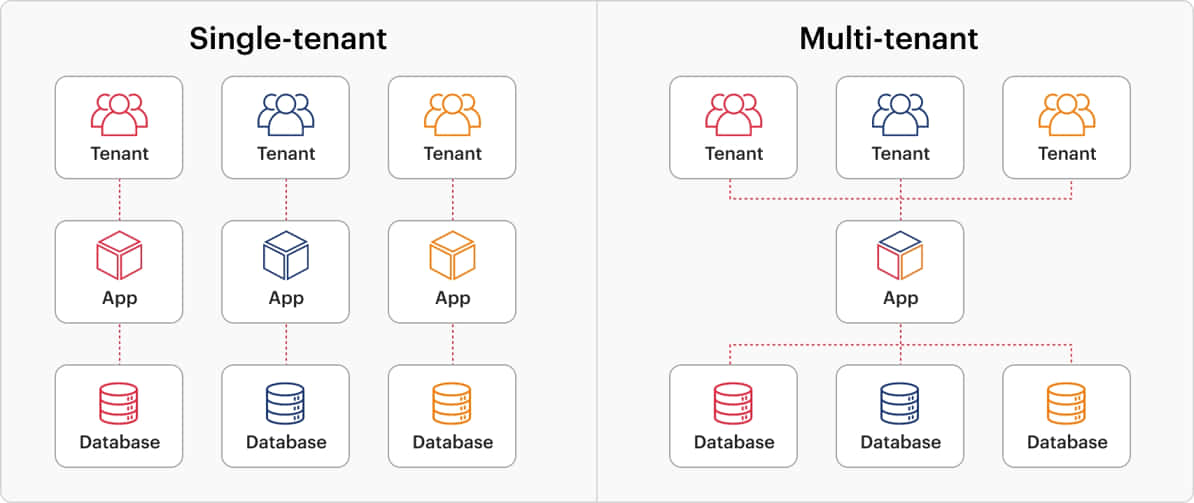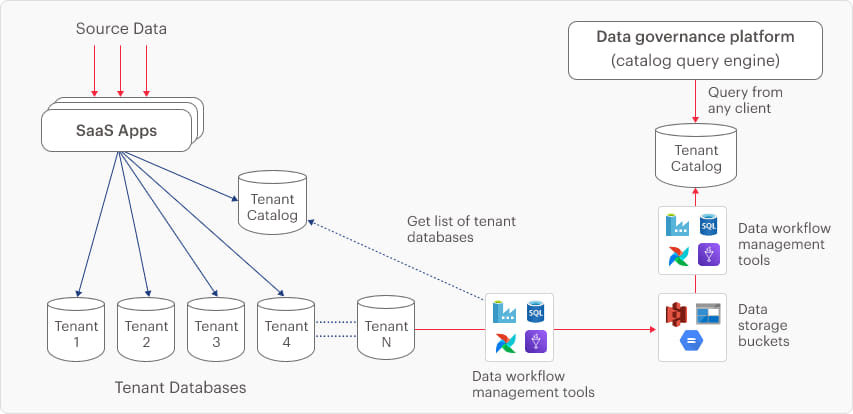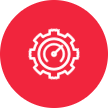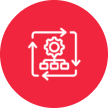Powering businesses with a faster configurable multi-tenant architecture
Reading Time: 5 minutes

Multi-tenant architecture, or multi-tenancy, is an important concept in contemporary application development, particularly with the surge in cloud transformation computing and software-as-a-service (SaaS) business models. Multitenancy accelerates application development and scaling by enabling the sharing of a single software instance among different users.
Companies seek dynamic strategies for data management in the current business landscape, making multi-tenancy a valuable solution.
What is multi-tenant architecture?
Multi-tenant architecture is a design approach that grants multiple user groups, referred to as tenants, access to several instances of the same application or system, utilizing the same hardware resources. This approach allows each user to access specific functionalities, configurations, and data of a given instance.
Multi-tenant architecture creates separate, independent environments within a single physical infrastructure such as a server, or cloud platform. The isolation is achieved by partitioning data storage and processing, providing each tenant with dedicated space in the system. Tenants interact with the application and access their respective data.

Fig.1. Single-tenant and multi-tenant architecture design
Tenants can be:
- Users and user groups external to the company but related to the business (e.g., resellers, agents, franchise units, etc.).
- Customers (e.g., subscribers or client companies).
- Internal users (e.g., departments, global business units, or single users with specific needs).
Why does multi-tenant analytics matter?
Multi-tenant analytics leverages multi-tenant architecture for analytics use-cases. Analytics and business intelligence platforms that support multi-tenancy enable sharing dashboards and reporting capabilities to different user groups in a secure and cost-efficient way. For example, a B2B company can use a multi-tenant analytics platform to provide each customer with their isolated instance of the analytics over a shared platform and resources — but with data only relevant to them. Updates like new metrics, visualizations, or dashboard design can be pushed out easily across all customer instances, streamlining the management and scaling of the analytics.

Fig.2. Architecture for multi-tenant analytics platform
Benefits of multi-tenant architecture
Some of the most notable benefits of multi-tenancy include:

Scalability: Companies can easily scale up or down as per their usage, reducing the need to manage multiple systems.

Cost savings: Multitenancy allows companies to reduce costs by leveraging shared resources instead of having separate systems dedicated to one tenant at a time or investing in additional servers or hardware.

Easy Maintenance/Management: Multi-tenant architecture is simpler to maintain and manage as compared to single-tenant setups because all tenants use the same source code body and platform.

Resource Optimization: Multi-tenancy improves efficiency by allowing multiple tenants share and use resources more effectively. This means companies can allocate resources as needed without impacting performance, resulting in better resource utilization while handling of big workloads.
Multi-tenancy allows for customizable solutions
Isolated multi-tenant environments permit tenants to customize their assigned environment to meet their individual needs and preferences by setting up unique configurations, user interface design, and data security settings. Tenants can use the multi-tenant application for their specific use cases, such as filtering data by different branches or locations and creating specified metrics and dashboards. Additionally, different sets of rules can be applied to each domain in terms of access control, resource allocation, and feature availability.
Five best practices for implementing multi-tenancy
Some of the most notable benefits of multi-tenancy include:

Scalability planning: Design applications to accommodate the scalability of tenants and workloads. Employ modular approaches, microservices architecture, or auto-scaling features that can enable fault isolation and independent deployment.

Tenant data privacy and security: Implement strict data isolation mechanisms and logic like tenant separation, data filtering, tenant identification, etc. to maintain data privacy and security for each tenant. Manage authentication, authorization, and user identities in intervals. Regularly update and patch the applications to mitigate security vulnerabilities.

Architecture performance and resource usage review: Monitor key performance indicators (KPIs), optimize resource allocation, and address quickly any performance bottlenecks. Leverage monitoring and analytics solutions for well-informed decision-making.

Process orchestration for automation: Utilize automation and orchestration tools to streamline deployment, management, maintenance, and scaling processes. Minimize manual intervention, enhance efficiency, and ensure consistency across the application.

Easy onboarding: The setup of a multi-tenant environment must be well-documented, and the available resources should be made available to customers to ease out the setup process.
Conclusion
Multi-tenant architecture is easier to maintain and scale than single-tenancy, thus enabling faster innovation. Every business has different data management needs, workflows and goals. Therefore, it is important to create customized solutions and optimize support architectures for every business. In today’s dynamic and volume-driven data world, multi-tenancy can offer the ability to customize and personalize the solution to meet the unique needs of each tenant, ensuring a high standard of performance, security and reliability. The multi-tenancy model is the optimal choice while building SaaS, AaaS, PaaS or IaaS applications.
Authored by:
Gitesh Shinde is a DevOps Lead at Sigmoid with a strong focus on DevOps practices and automation. His current role involves overseeing and driving the implementation of DevOps principles within the organization, optimizing software development and deployment processes, and fostering a culture of collaboration and efficiency.
Featured blogs
Subscribe to get latest insights
Talk to our experts
Get the best ROI with Sigmoid’s services in data engineering and AI
Featured blogs
Talk to our experts
Get the best ROI with Sigmoid’s services in data engineering and AI






